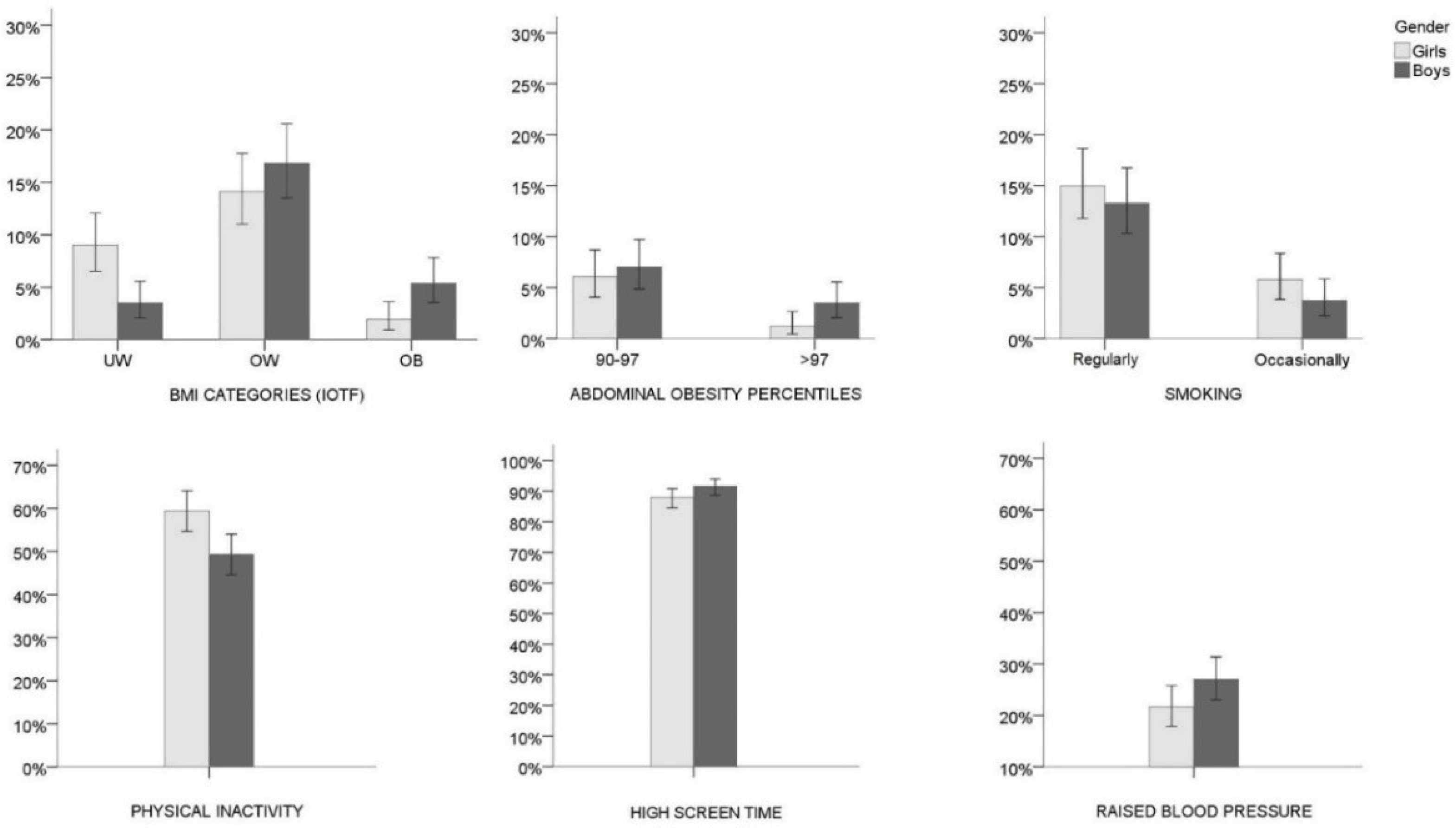Correction: Radman et al. Prevalence of Key Modifiable Cardiovascular Risk Factors among Urban Adolescents: The CRO-PALS Study. Int. J. Environ. Res. Public Health 2020, 17, 3162
1. Error in Figure

2. Text Correction
Reference
- Radman, I.; Sorić, M.; Mišigoj-Duraković, M. Prevalence of Key Modifiable Cardiovascular Risk Factors among Urban Adolescents: The CRO-PALS Study. Int. J. Environ. Res. Public Health 2020, 17, 3162. [Google Scholar] [CrossRef] [PubMed]
Disclaimer/Publisher’s Note: The statements, opinions and data contained in all publications are solely those of the individual author(s) and contributor(s) and not of MDPI and/or the editor(s). MDPI and/or the editor(s) disclaim responsibility for any injury to people or property resulting from any ideas, methods, instructions or products referred to in the content. |
© 2023 by the authors. Licensee MDPI, Basel, Switzerland. This article is an open access article distributed under the terms and conditions of the Creative Commons Attribution (CC BY) license (https://creativecommons.org/licenses/by/4.0/).
Share and Cite
Radman, I.; Sorić, M.; Mišigoj-Duraković, M. Correction: Radman et al. Prevalence of Key Modifiable Cardiovascular Risk Factors among Urban Adolescents: The CRO-PALS Study. Int. J. Environ. Res. Public Health 2020, 17, 3162. Int. J. Environ. Res. Public Health 2023, 20, 7003. https://doi.org/10.3390/ijerph20217003
Radman I, Sorić M, Mišigoj-Duraković M. Correction: Radman et al. Prevalence of Key Modifiable Cardiovascular Risk Factors among Urban Adolescents: The CRO-PALS Study. Int. J. Environ. Res. Public Health 2020, 17, 3162. International Journal of Environmental Research and Public Health. 2023; 20(21):7003. https://doi.org/10.3390/ijerph20217003
Chicago/Turabian StyleRadman, Ivan, Maroje Sorić, and Marjeta Mišigoj-Duraković. 2023. "Correction: Radman et al. Prevalence of Key Modifiable Cardiovascular Risk Factors among Urban Adolescents: The CRO-PALS Study. Int. J. Environ. Res. Public Health 2020, 17, 3162" International Journal of Environmental Research and Public Health 20, no. 21: 7003. https://doi.org/10.3390/ijerph20217003
APA StyleRadman, I., Sorić, M., & Mišigoj-Duraković, M. (2023). Correction: Radman et al. Prevalence of Key Modifiable Cardiovascular Risk Factors among Urban Adolescents: The CRO-PALS Study. Int. J. Environ. Res. Public Health 2020, 17, 3162. International Journal of Environmental Research and Public Health, 20(21), 7003. https://doi.org/10.3390/ijerph20217003




